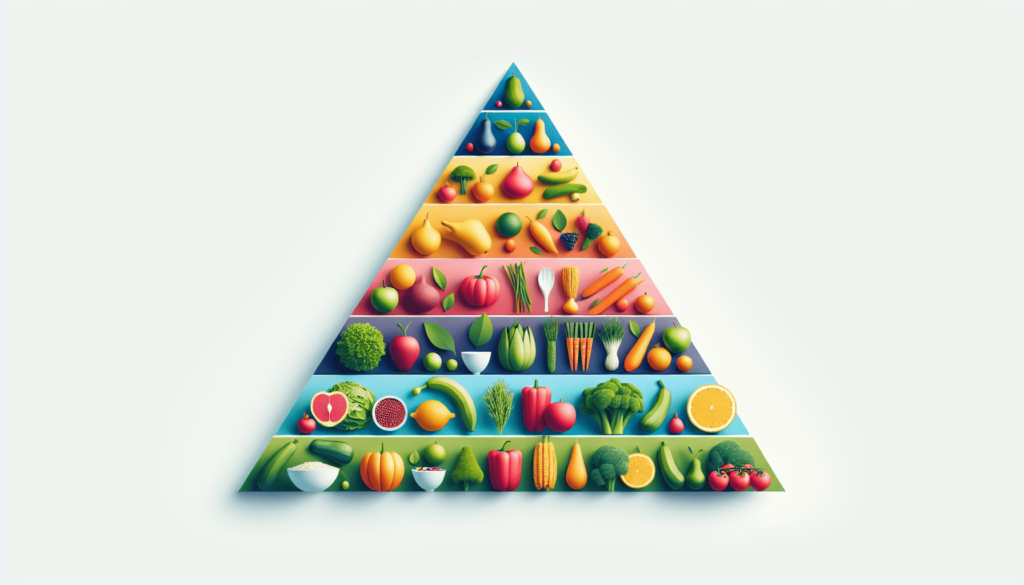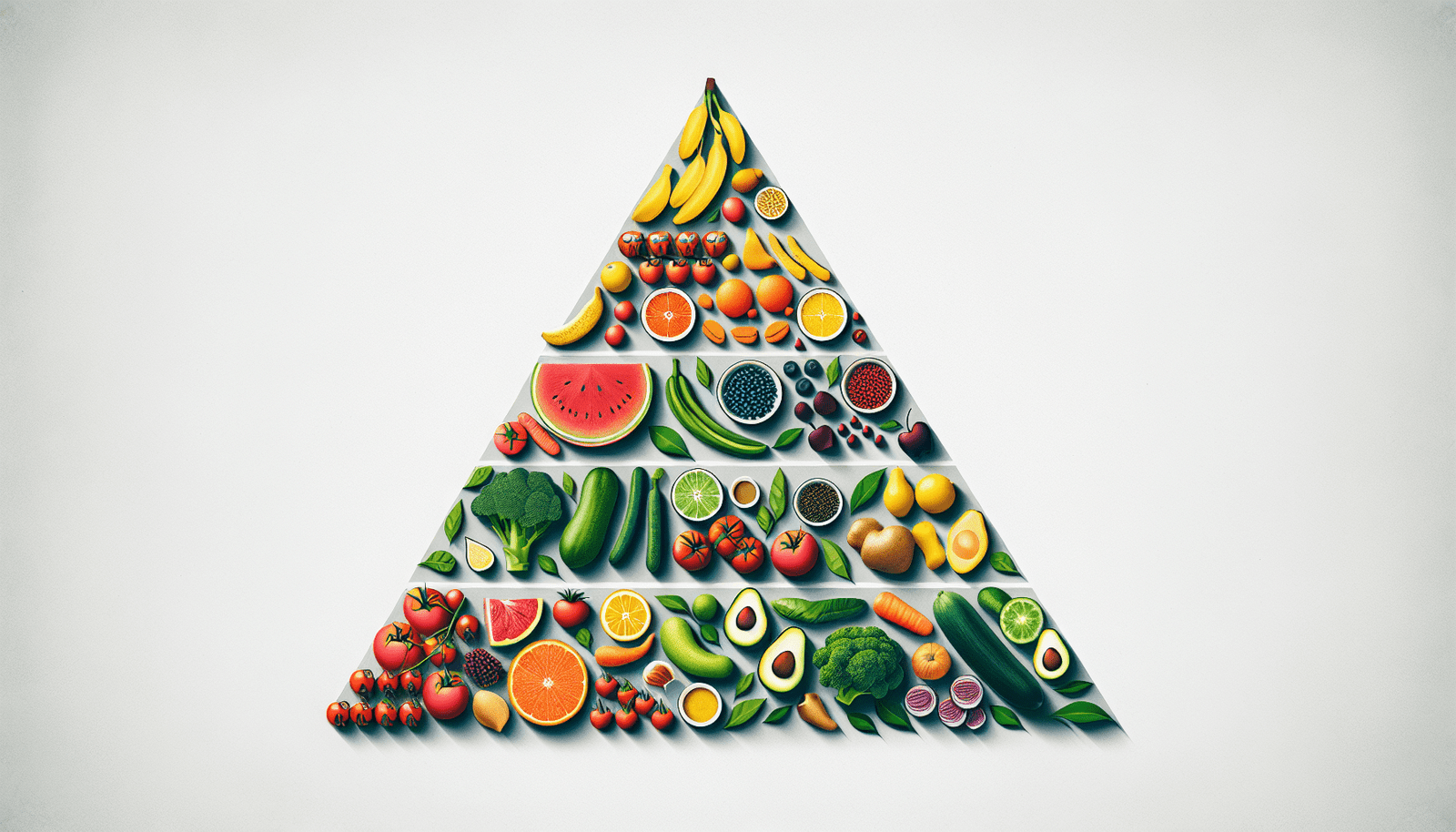Have you ever wondered about the importance of following the food pyramid in today’s modern world? In this article, we will delve into the traditional Food Pyramid, its evolution into MyPlate, and how you can use this knowledge to make healthier food choices. Let’s explore the ins and outs of nutrition together!

The Traditional Food Pyramid
Let’s start our journey by revisiting the classic Food Pyramid that most of us grew up with. The traditional Food Pyramid was first introduced by the United States Department of Agriculture (USDA) in 1992. It was designed to visually represent the different food groups and their recommended daily servings.
Understanding the Food Groups
The Food Pyramid was divided into five food groups: grains, fruits, vegetables, dairy, and protein. Each group had a recommended daily serving that individuals were encouraged to follow for a balanced diet. By understanding the importance of each food group, you could make informed choices about what to eat.
The Evolution of the Food Pyramid
As our understanding of nutrition and health has evolved, so has the Food Pyramid. In 2011, the USDA replaced the traditional Food Pyramid with MyPlate, a simpler visual representation of a healthy plate. MyPlate emphasizes the importance of portion control and balanced meals, making it easier for individuals to make healthier choices.
Transitioning to MyPlate
MyPlate divides a standard dinner plate into four sections: fruits, vegetables, grains, and protein. It also includes a side of dairy to represent the importance of calcium in our diets. By following the guidelines of MyPlate, you can create a balanced meal that is rich in essential nutrients.

Applying the Food Pyramid to Your Diet
Now that we have discussed the traditional Food Pyramid and its evolution into MyPlate, let’s talk about how you can apply this knowledge to your daily diet. By following these simple guidelines, you can make healthier food choices and improve your overall well-being.
Planning Your Meals
Start by planning your meals around the five food groups: grains, fruits, vegetables, dairy, and protein. Aim to include a variety of foods from each group to ensure that you are getting a wide range of nutrients. Be mindful of portion sizes and try to fill half your plate with fruits and vegetables.
Making Smart Choices
When grocery shopping, focus on purchasing whole foods that are as close to their natural state as possible. Avoid processed foods and sugary drinks, as they are often high in unhealthy fats and added sugars. Choose lean proteins, whole grains, and plenty of fruits and vegetables to create a balanced diet.
Cooking at Home
One of the best ways to ensure that you are following the Food Pyramid is to cook at home as much as possible. By preparing your meals from scratch, you can control the ingredients and avoid hidden fats, sugars, and other additives. Get creative in the kitchen and try new recipes that incorporate a variety of foods from the different food groups.
Benefits of Following the Food Pyramid
By following the principles of the Food Pyramid, you can experience a wide range of health benefits. A balanced diet that includes a variety of foods from all the food groups can help reduce your risk of chronic diseases, such as heart disease, diabetes, and obesity. Eating a nutrient-dense diet can also improve your energy levels, mood, and overall well-being.
Weight Management
Following the Food Pyramid can help you maintain a healthy weight by ensuring that you are consuming the right balance of nutrients. By focusing on portion control and eating a variety of foods, you can manage your calorie intake and avoid overeating. This can lead to sustainable weight loss or maintenance over time.
Nutrient Intake
Each food group in the Food Pyramid provides essential nutrients that are important for your overall health. Grains are a good source of carbohydrates and fiber, fruits and vegetables are packed with vitamins and minerals, dairy products contain calcium and protein, and protein foods provide essential amino acids. By including foods from each group in your diet, you can ensure that you are getting all the nutrients your body needs to function properly.
Improved Digestion
A diet that is rich in fruits, vegetables, whole grains, and fiber can help improve your digestion and prevent constipation. Fiber helps to regulate bowel movements and keep your digestive system running smoothly. By following the Food Pyramid and eating a variety of fiber-rich foods, you can support a healthy gut and promote optimal digestion.
Common Misconceptions About the Food Pyramid
Despite its many benefits, the Food Pyramid has faced its fair share of criticism and misconceptions over the years. Let’s address some of the common myths and misunderstandings surrounding the Food Pyramid and set the record straight.
Cutting Out Entire Food Groups
One of the biggest misconceptions about the Food Pyramid is that you need to cut out entire food groups, such as carbohydrates or fats, to be healthy. In reality, each food group plays a unique role in our diet and provides essential nutrients that our bodies need to function properly. It’s all about balance and moderation.
One-Size-Fits-All Approach
Another common myth about the Food Pyramid is that it is a one-size-fits-all approach to nutrition. While the general guidelines of the Food Pyramid are a good starting point for most people, individual needs may vary based on factors such as age, gender, activity level, and underlying health conditions. It’s important to listen to your body and make adjustments to your diet as needed.
Focusing Only on Calories
Some people mistakenly believe that following the Food Pyramid is solely about counting calories and restricting food intake. While portion control is an important aspect of the Food Pyramid, it’s also about nourishing your body with a variety of nutrient-dense foods. Quality over quantity is key when it comes to following a healthy diet.
Conclusion
In conclusion, revisiting the Food Pyramid from a modern perspective can provide valuable insights into making healthier food choices and improving your overall well-being. By understanding the principles of the Food Pyramid and applying them to your daily diet, you can experience a wide range of health benefits, from weight management to improved digestion. Remember to focus on balance, variety, and moderation when it comes to your nutrition, and you’ll be well on your way to a healthier lifestyle. Thank you for joining us on this journey through the Food Pyramid!

